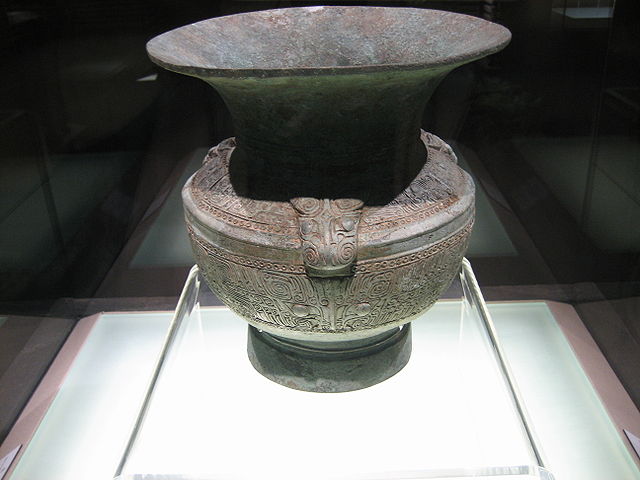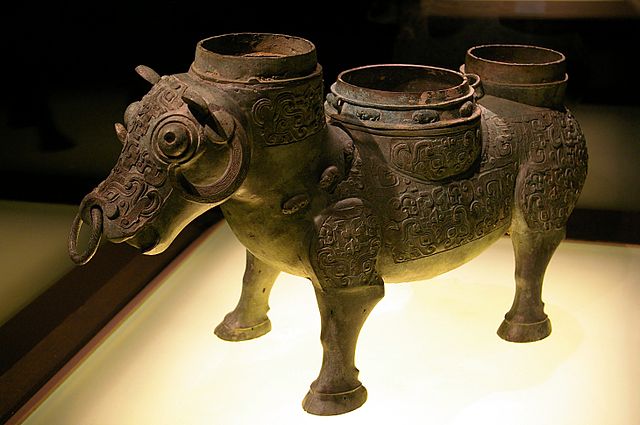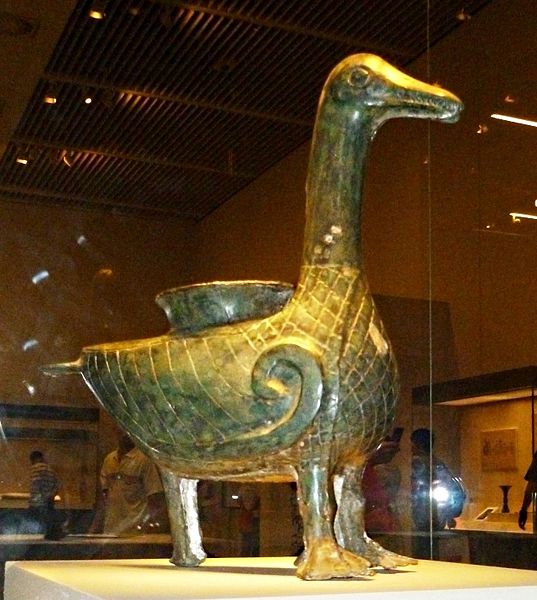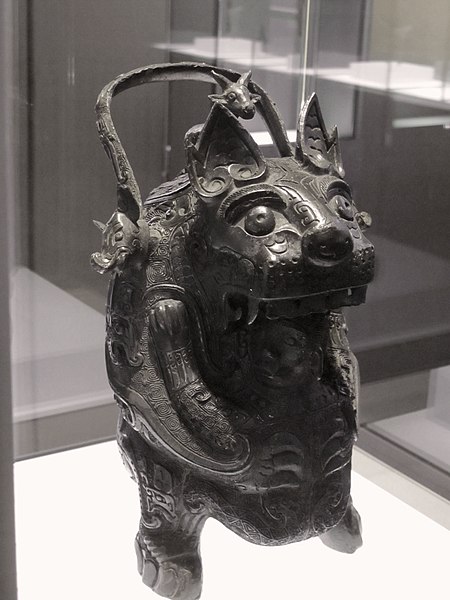The zun or yi, used until the Northern Song (960–1126) is a type of Chinese ritual bronze or ceramic wine vessel with a round or square vase-like form, sometimes in the shape of an animal, first appearing in the Shang dynasty. Used in religious ceremonies to hold wine, the zun has a wide lip to facilitate pouring. Vessels have been found in the shape of a dragon, an ox, a goose, and more. One notable zun is the He zun from the Western Zhou.
A zun with taotie dating to the Shang dynasty
A rare Xi zun in the shape of an ox
Western Zhou goose-shaped bronze zun. National Museum of China
bronze zun-pan set from the tomb of Marquis Yi of Zeng
Sets and individual examples of ritual bronzes survive from when they were made mainly during the Chinese Bronze Age. Ritual bronzes create quite an impression both due to their sophistication of design and manufacturing process, but also because of their remarkable durability. From around 1650 BCE, these elaborately decorated vessels were deposited as grave goods in the tombs of royalty and the nobility, and were evidently produced in very large numbers, with documented excavations finding over 200 pieces in a single royal tomb. They were produced for an individual or social group to use in making ritual offerings of food and drink to his or their ancestors and other deities or spirits. Such ceremonies generally took place in family temples or ceremonial halls over tombs. These ceremonies can be seen as ritual banquets in which both living and dead members of a family were supposed to participate. Details of these ritual ceremonies are preserved through early literary records. On the death of the owner of a ritual bronze, it would often be placed in his tomb, so that he could continue to pay his respects in the afterlife; other examples were cast specifically as grave goods. Indeed, many surviving examples have been excavated from graves.

A variety of wine vessels around an altar, Western Zhou, Metropolitan Museum of Art.
A Shang dynasty bronze vessel to preserve drink; 11th century BC; height: 35.2 cm; Musee Cernuschi (Paris)
Square zun with four sheep heads; Shang Dynasty, 13th-10th century BCE
Taibao Ding, from Shandong c.10th century BCE, Western Zhou








